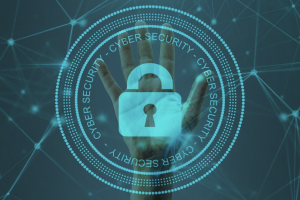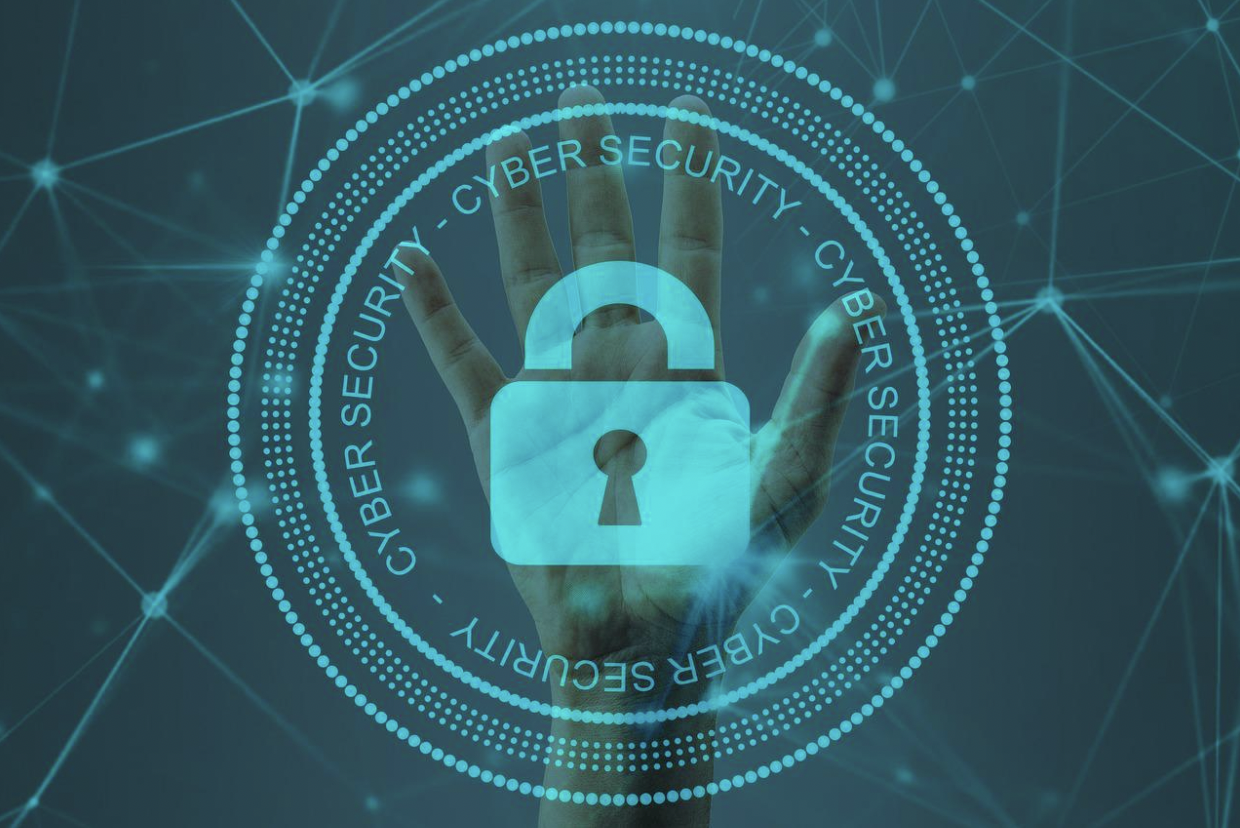Security is an essential aspect of business operations. Effective security is crucial to any business because it takes care of the company’s data, employees, and its customer’s data. There can be many severe consequences if your business doesn’t consider the proper application of cybersecurity.
What is cybersecurity?
Cybersecurity is a broader term than its definition. It is the practice of using various technologies and techniques to protect digital systems, programs, data, and all devices present in this system against cyber-attacks.
With the increase in technology, cybercriminals are also getting smarter day by day. They use new techniques and processes to attack different businesses and companies. In this regard, manual cybersecurity techniques may not be sufficient to protect your data from threat actors.
We used to think there was a human behind all those cyberattacks. That was true at some point, but not today. With advanced technology, cybercriminals have also shifted to automated cyber-attacks.
Read additional resources on: what does cybersecurity do?
Here, the need for an automated cybersecurity system arises that can help reduce the increasing number of cyberattacks.
What is cybersecurity automation?
Cybersecurity automation, a key component of the DevSecOps approach to software development and maintenance, is an advanced way to protect systems against cyber-attacks. It uses AI and Machine Learning to program security systems in a way that they can sense, detect, and stop cyber threats automatically.
For instance, instead of alarming the security technician to take action against a cyber threat, automation in cybersecurity recognizes a potential threat and can neutralize it automatically. AI and Machine Learning help to identify the best solution to tackle the threat.
According to a study, “74% of security events and alerts are ignored because security teams can’t keep up with the suffocating volume of threats”.
Furthermore, the same study revealed, “77% of people stated that if given access to automation/orchestration tools, they would investigate the security events/alerts they currently ignore”.
Therefore, using cybersecurity automation will not only help you make the security system efficient but also increase overall effectiveness and productivity across the organization.
How does it work?
Businesses can implement various types of cybersecurity automation solutions. These hi-tech solutions provide automation in cybersecurity and help you detect cyberattacks and neutralize them using AI and ML.
Automated cybersecurity works by gathering and correlating data. After recognizing and neutralizing potential threats, cybersecurity automation will run a scan on your system to check if there are any other threats left behind. Analyzing the system afterward will ensure that it is safe from the threat.
Where should cybersecurity be implemented?
Image source: Pixabay
There are several areas where cybersecurity automation should be implemented, including
- Critical infrastructure cybersecurity
- Cloud security
- Network security
- Internet of Things (IoT) security
Critical cybersecurity, as the name suggests, is a technique to secure systems having critical infrastructures, such as traffic lights, electricity grids, hospitals, etc. Organizations need to identify vulnerable points to secure such systems from cyberattacks.
The next place where cybersecurity should be implemented is cloud security. Organizations have different means to store their data. Web-based storage is one of those systems which needs to be secured the most. Cloud storage is typically handled by automation as they manage and monitor their data. They are the place where most cyberattacks occur.
Another place is network security. Network security is vital as most companies have an online presence and online data. With the world being digitized, there is more data available than ever before. Automated cybersecurity helps companies secure their network against cyberattacks.
The next place for cybersecurity automation is the Internet of Things. Over the years, connected devices have gained enough popularity. However, they are not always secure to use and are vulnerable to cyberattacks. Therefore, IoT devices also need automated cybersecurity.
Why do you need cybersecurity automation?
As mentioned above, cyberattacks have also become automated. With the world being digitized, if organizations try to defend against these attacks manually, they can’t defend their systems. They need cybersecurity automation to fight such automated threats.
You need cybersecurity automation to:
Correlate data
Security vendors collect threat data to secure systems from future attacks. The threat data is of no use if it is not organized into an actionable next step. To correlate data effectively, organizations need to collect threat data from all threat vectors.
Then, they need to identify the possible next step of bad actors with the data collected. The more data collected, the more accurate the results will be. However, with so much data available, it is difficult to scale today’s threat volume manually. That is why you need automation to do this quickly and effectively.
Generate protections faster than attacks can spread
After identifying the threat, it is crucial to generate protections faster than the attacks can spread. Creating a set of protections for different technologies and security enforcement points, responsible for identifying future behavior, is a lengthy process. Also, doing this manually can take longer than usual. Security automation can accelerate the process of setting protections with the pace at which the attack spreads.
Implement data protection faster
Once data is correlated and protection is made, it’s time to implement those protections on the system. Organizations should not only implement protections in the location where the threat was identified but also across the whole network and technologies to protect the attack from spreading and from future attacks.
With automated cybersecurity, you can implement data protection faster and predict future attacks.
Identify infections already in your network
There is very little time between a threat entering your network and becoming a data breach. To protect your network against data breaches, you must move at the speed of the attack itself. In order to protect an infected host from a data breach, you need to be able to identify infections already in your network. Correlating data and analyzing it manually is difficult to scale. Security automation provides faster detection of threats and intervention.
Attackers nowadays use automation to scale up their attacks and move fast. To keep up with them and prevent systems from such attacks, it is crucial to employ cybersecurity automation in your organization.
Benefits of automation in cybersecurity
According to The EY Global Information Security Survey 2021,

“81% of businesses claim COVID-19 forced organizations to bypass cybersecurity processes”.
This number is only going to increase if we don’t take cybersecurity automation seriously. There are several significant benefits of automation in cybersecurity.
Standardization of security processes
A standard classification of security tools and processing is required across the organization to implement security automation. This facilitates automatic processes. Also, it helps in defining manual processes and implementing them throughout the organization.
Enhanced productivity
Removing the burden of cybersecurity off the security technicians aids in enhanced productivity throughout the organization. Automatic processes allow them to focus on higher-value activities.
Improved accuracy
Cybersecurity automation aids in improved accuracy as it prevents human error. It ensures consistency throughout the performance, compliances, processes, and the prevention of mistakes.
Reduced incidence
Security automation ensures to manage and reduce incidence across the system. It helps simplify the critical processes, thus reducing incidence.
Reduced cost & validation time
According to IBM, the average cost of a data breach has increased significantly up to 10% from last year.
Having automation can significantly reduce this cost as it helps prevent data breaches in organizations. It can also speed up the process as it takes very little to no time to run tests simultaneously.
Better insights
One of the many benefits of automation is that it helps developers pinpoint the weak areas and assists them in closing the vulnerability gaps, thus resulting in providing better insights to the organization.
3 Best Cybersecurity Automation Tools
“Inevitably, as we move to an increasingly digital world, our options are game-changers in safeguarding our society and digital future,” says Michael Rogers, former Director of the U.S National Security Agency
It has not been left as an option now to use cybersecurity automation. It has become the need of the hour. However, with so many automated solutions available, it can sometimes become
gloomy for organizations to select the best one. Below are the 3 best cybersecurity automation tools which you will regret missing.
-
CyberArrow
CyberArrow is among the best cyber security automation tools that is built with simplicity in mind. It supports leading standards such as UAE IA, SAMA, NCA, and ISO 27001. All powerful features can be administered with minimal training.
Its services include risk and compliance modules, awareness training, penetration testing, policy management module, and technical implementations. It has done over 20+ partnerships with 100+ satisfied clients. Furthermore, CyberArrow aims to empower organizations dealing with cyber attacks and make them more secure.
-
Cynet
Cynet is another tool for cybersecurity automation. It provides an automated, end-to-end encrypted platform, backed by an MDR service. Its system is natively automated and easy to use. Furthermore, Cynet aims to provide a system where security is on auto-pilot.
-
Splunk
Splunk is a unified security and observability platform. It provides different solutions for cybersecurity automation. Its services include advanced threat detection, cloud migration, incident investigations, etc. Splunk is a data platform built for expansive data access, powerful analytics, and automation.
Wrapping up!
Cybersecurity automation has become more important than ever before. With the increasing trends in technologies and the way cybercriminals prepare for automated cyberattacks, you must make use of the best-automated solutions available. Shifting to an automated system will drastically reduce the risk of cyber-attacks throughout your organization.




